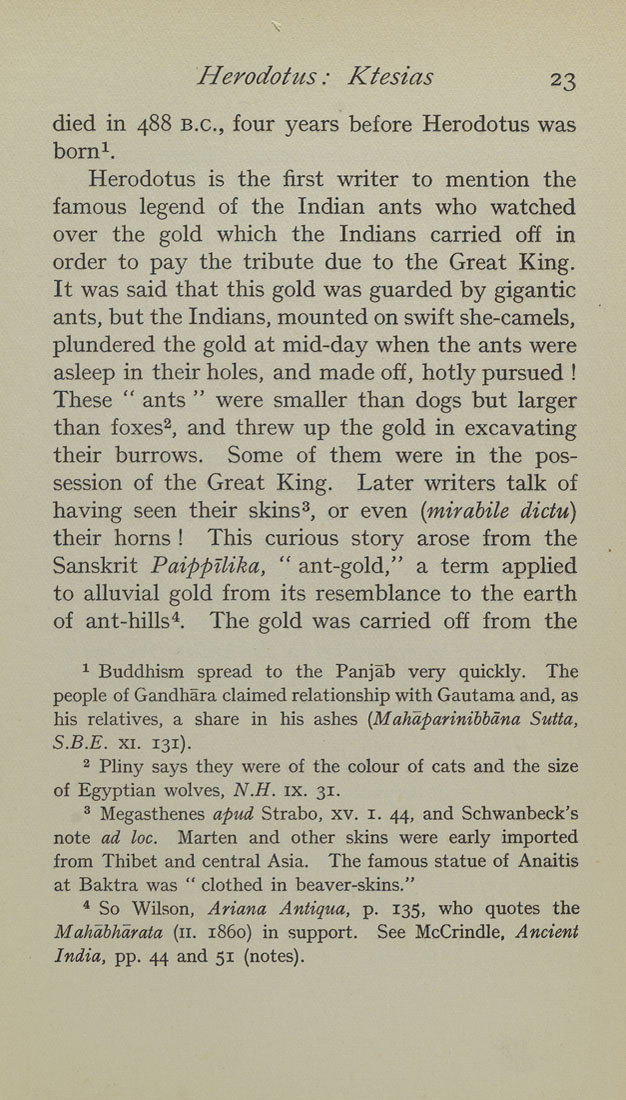Herodotus: Ktesias 23
died in 488 B.C., four years before Herodotus was
born^.
Herodotus is the first writer to mention the
famous legend of the Indian ants who watched
over the gold which the Indians carried off in
order to pay the tribute due to the Great King.
It was said that this gold was guarded by gigantic
ants, but the Indians, mounted on swift she-camels,
plundered the gold at mid-day when the ants were
asleep in their holes, and made off, hotly pursued !
These " ants " were smaller than dogs but larger
than foxes^, and threw up the gold in excavating
their burrows. Some of them were in the pos¬
session of the Great King. Later writers talk of
having seen their skins ^, or even {mirabile dictu)
their horns ! This curious story arose from the
Sanskrit PaippUika, " ant-gold," a term applied
to alluvial gold from its resemblance to the earth
of ant-hills*. The gold was carried off from the
^ Buddhism spread to the Panjab very quickly. The
people of Gandhara claimed relationship with Gautama and, as
his relatives, a share in his ashes {Mahdparinibbdna Sutta,
S.B.E. XI. 131).
2 Pliny says they were of the colour of cats and the size
of Egyptian wolves, N.H. ix. 31.
^ Megasthenes apud Strabo, xv. i. 44, and Schwanbeck's
note ad loc. Marten and other skins were early imported
from Thibet and central Asia, The famous statue of Anaitis
at Baktra was " clothed in beaver-skins,"
* So Wilson, Ariana Antiqua, p, 135, who quotes the
Mahdbhdrata (11, i860) in support. See McCrindle, Ancient
India, pp, 44 and 51 (notes).
|








